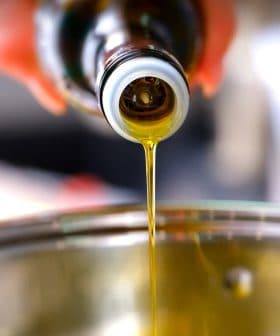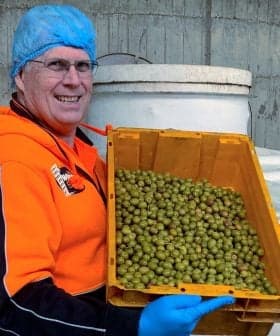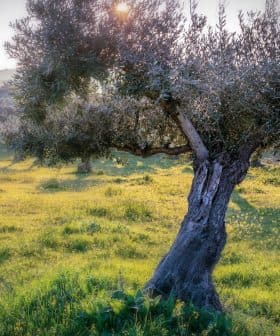EVOO Research Hits a Wall in Greece
The article discusses the controversy surrounding the implementation of EU labeling regulation 432/2012 in Greece, revealing possible scientific misconduct and fraud within the EU scientific community. The investigation uncovers political interventions, professional rivalries, and conflicting interests impacting the implementation of the regulation, particularly in relation to measuring phenolic compounds in olive oil. Despite the availability of the NMR method for accurate measurements, some Greek academics are developing alternative methods, potentially influenced by personal and financial motives.
I have been reporting for over a year now on the controversy regarding the implementation of EU labeling regulation 432/2012 in Greece. It has been a Herculean task attempting to unravel this Gordian knot of misinformation and scientific obfuscation.
My investigation has continued and has gone beyond the events I reported in previous articles. I have come face to face with the conflicting interests, political interventions, professional jealousies, and possible scientific misconduct and fraud within the EU scientific community.
When I began this journey, I assumed that scientists were seekers of truth and innovation. At least that was my experience up until then. In modern day Greece however some academics who are well connected by family relations or by political affiliations receive preferential treatment even when their work is substandard or even downright fraudulent. There is a great deal of money given to a small number of well-connected academics in Greece. Recently it was reported that millions of euros in EU grants for research were fraudulently obtained. The names of the reserchers involved have not been published.
Personal academic rivalries were revealed when a letter was sent to the previous president of the Greek Parliament by three prominent scientists; Dimitrios Boskou, Maria Tsimidou and Alexios-Leandros Skaltsounis on June 18, 2014. They objected to the question that was posed to Minister of Agriculture Athanasios Tsaftaris last year by a few members of parliament relating to the EU health claim labeling regulation 432/2012.
Here is an excerpt:
“To our surprise, we discovered that an international website (oliveoiltimes.com) reported that a group of Greek elected officials submitted a question in Parliament, which is associated with the scientific analysis (NMR) to detect two specific substances (oleocanthal and oleacein) in virgin olive oil and asks the competent authorities — namely EFET (Hellenic National Food Safety) and the Ministry of Agricultural Development and Food — to endorse a scientific analysis (NMR) in order to show the superiority of certain oils produced in Greece. Such actions we think are extremely misguided, scientifically vague, creating great confusion among producers and many questions about their motivation.”
What motivated these three scientists to write a letter questioning the motivations of elected officials took a while to figure out. However, what motivated the elected officials is more obvious.
The question posed by a group of parliamentarians acting on behalf of olive growers was asking for clarification on why EFET refused to implement the regulation Tsaftaris himself had so enthusiastically embraced earlier. The NMR would be the perfect instrument to use for this purpose. But it needed a political decision and support in order for the NMR to be more accessible.
The global scientific community has enthusiastically embraced the NMR method for accurately measuring individual phenolic compounds but in Greece it has been ignored. Why? Because there is a great deal of EU funding at stake. The EU has been generously funding Greek scientists to find new methods to measure phenolic compounds in olive oil for the purpose of implementing the EU labeling regulation 432/2012, but the NMR was already invented without any research funding from the EU.
The following health claim is allowed on labels: Olive oil polyphenols contribute to the protection of blood lipids from oxidative stress. The claim may be used only for olive oil which contains at least 5 mg of hydroxytyrosol and its derivatives (e.g. oleuropein complex and tyrosol) per 20 g of olive oil. In order to bear the claim information shall be provided to the consumer that the beneficial effect is obtained with a daily intake of 20 gm of olive oil.
Contrary to the above health claim allowed by the EU, the three scientists who wrote the letter (Boskou, Tsimidou and Skaltsounis) claimed that it was not possible to quantify the health benefits of individual phenolic compounds in olive oil:
“The issue raised in the Greek Parliament is scientifically complex and what is the most efficient, reliable and economical method of analysis or which substances should be identified, is something that should be answered by the scientific community rather than answered by members of Parliament. Olive oil is very rich in bioactive components, a class which are chemically related biophenols with hydroxytyrosol and tyrosol and it is not possible to quantify the contribution of each individual compound in the overall beneficial effect on health.”
But the EU had already quantified the health benefits of hydroxytyrosol and its derivatives found in olive oil. This was the basis of the health claim allowed on the label of high polyphenol EVOOs that qualify. In fact Tsaftaris was asked because he had authority over EFET amid complaints that EFET was not allowing the EU health claim regulation to be implemented.
What makes this even more strange is the three scientists who signed this letter of protest are well respected in the field of olive oil research. This made me very curious. So I looked into their intertwined relationships. Tsaftaris was also a professor at Aristotelian University in Thessaloniki where Boskou and Tsimidou are headquartered. Could they have influenced EFET to flip flop on implementing the regulation?
I was surprised to see Skaltsounis name on the letter. Skaltsounis is the head of the department of Pharmacognosy at the University of Athens where Prokopios Magiatis discovered the NMR method of accurately measuring individual phenolic compounds in olive oil. Why would he not want the NMR to be used to measure hydroxytyrosol and its derivatives in olive oil in order to comply with the regulation? And why were these three scientists getting the president of the Greek Parliament involved, who has no authority or knowledge on such matters? Did they believe they had that much political power?
My investigation yielded a number of irregularities and vicious rivalries hiding behind this particular letter. But first a recap of events that led up to it and some additional background.
After the initial question Tsaftaris consulted with EFET and the answer was: “oleocanthal and oleacein cannot be measured and included in order to qualify for the health claim because they are not specifically mentioned in the regulation.” Upon hearing what I thought to be a misguided and unscientific decision, I immediately called and wrote a letter to the EU and asked for clarification on what specific derivatives of hydroxytyrosol should be measured in order to qualify for the health claim. I also wrote to EFET explaining the regulation and making a case for the inclusion of oleocanthal and oleacein. The regulation referred to derivatives of hydroxytyrosol such as, tyrosol etc. An chemist with knowledge of olive oil chemistry would know what other derivatives they were referring to. Even if they did not know, all they had to do is google it like I did.
Consequently EFET reversed their decision and confirmed that indeed oleocanthal and oleacein should be measured in order to qualify for the health claim. Upon hearing this I immediately sent a letter to the EU informing them that EFET had accepted oleocanthal and oleacein and therefore their opinion was no longer needed. I also added: “my understanding is that EFET as the authority over food quality and safety within Greece has jurisdiction to interpret how EU regulations should be implemented.” I asked them to confirm that fact.
The irony of this situation is that a reporter armed with a passion for reading research papers and legal briefs with no formal chemistry or legal background, would have to explain the chemistry behind EU regulations and legal standing of EFET in relation to the EU. Shortly after I published the positive decision, EFET flip-flopped once again and asked the EU for clarification on whether oleocanthal should be included.
This was a devastating turn of events for Greek olive oil, which contains more oleocanthal than oleacein. A favorable decision by EFET would have been a very positive development for an industry sorely in need of good news.
In the meantime, I had to resend my letter to the EU several times because they were reorganizing their offices and departments. The EU finally answered my question after a year’s delay and informed me that indeed National Food Safety agencies in EU member countries have full authority to interpret and implement EU regulations. The only time the EU gets involved when there is a complaint, in which case they try to mediate but the ultimate decision is determined by the EU court of justice.
Upon receiving the email I wrote back and asked if there was a complaint made against EFET by any other country or individual. They provided me with a link where all the complaints are registered. I verified there were no complaints made against EFET on this, or any other issue in fact.
This led me to the obvious conclusion that the complaint that caused EFET to change their opinion repeatedly originated from inside Greece. But who was responsible for stopping a regulation from being implemented that would have such a positive effect on Greek olive oil?
I decided to meet and interview the people who authored the letter, starting with Mr. Skaltsounis as he was in Athens and I had written to Boskou and Tsimidou previously and my emails went unanswered and phone calls were not returned. Tsimidou was also working on a new method to measure phenolic compounds in olive oil and had repeatedly ignored the NMR method.
Skaltsounis readily agreed to an interview. As the head of the Pharmacognocy department at the University of Athens, Skaltsounis was in the same department where Magiatis and Melliou conducted their research. I met Skaltsounis at his lab at the University.
Skaltsounis had recently published a paper where he announced the discovery of a new CE (Capillary Electrophoresis) method to measure oleocanthal and oleacein. Skaltsounis claimed this new method was verified by HPLC and he cited the Magiatis paper on NMR as proof of its validity. I asked him if Magiatis or Melliou verified his method using NMR. “They do not know what they are doing,” he said emphatically.
Not wanting to turn this interview into a debate I allowed him to continue. I wanted to find out what was behind his attacks on two scientists who work in his own department. I have seen scientific rivalries before but this one was personal.
Skaltsounis generously showed me around his lab and all his research work in progress. He happily posed for pictures while claiming not to seek out publicity like some “others.” An obvious reference to the publicity Magiatis and Melliou have received internationally for their work with Quantitative NMR.
Here is an excerpt from his research paper:
“To the best of our knowledge, here we describe the first validated CE-method suitable for the simultaneous, quantitative determination of oleocanthal and oleacein in olive oil. So far only one assay has been reported fulfilling these criteria (Karkoula, Magiatis et al.,2012). Compared to the latter, which utilized quantitative NMR, the CE assay is much simpler and economic, yet the quantitative results are comparable and equally reproducible… Other, more conventional approaches like HPLC require longer analysis time (40 versus 15 min) and facilitate the determination of oleocanthal only (Impellizzeri & Lin, 2006).”
There is some doubt whether the results are indeed accurate and reproducible as they use HPLC as one of their validation methods. HPLC has already been refuted by Magiatis in a study of the HPLC method and published it in a peer reviewed journal. Simply stated, oleocanthal and oleacein react with the methanol or/and water used in HPLC causing inaccurate measurements. In order for the Skaltsounis CE method to work, pure oleocanthal and oleacein are needed as reference standards.
“We are trying to produce pure oleocanthal and oleacein here in our lab. We plan to have them be the first validated and accepted pure forms of oleocanthal and oleacein,” Skaltsounis told me.
“So you will then be the provider of oleocanthal and oleacein for all the tests that would be conducted by this new method?” I asked. “Yes of course” he said. “We have another lab in the outskirts of Athens where we conduct our work as well in co-operation with the University,” he added.
“So with your CE method would you be able to measure oleocanthal and oleacein in order to substantiate the EU regulation?” I asked. “Well we do not know which ones to measure because they change over time.” he explained.
He showed me a graph that illustrated how oleocanthal and oleacein revert to their original hydroxytyrosol and tyrosol. “That simply proves that oleocanthal and oleacein are derivatives of hydroxytyrosol and tyrosol.” I remarked. But Skaltsounis just shook his head.
It became obvious to this reporter why Skaltsounis would not want this regulation to be implemented using NMR method of measurement.
Greece is in the midst of a brain drain that forces the brightest and most talented scientists to seek work abroad. But it gets worse. Greece seems to be also suffering an intellectual property drain.
The Greek scientific community continues to innovate and invent new methods and patentable ideas and discoveries. But what happens to them? Where do they go? Who gets the credit and who benefits?
I learned from another professor that Magiatis had lodged an official complaint with the University of Athens about a patent Skaltsounis had registered in the US patent office in collaboration with the City of Hope cancer research facility in California. Magiatis claims he was one of the inventors but he was not credited and neither was the University of Athens. I asked Magiatis about this and he confirmed that he did indeed file the complaint.
The complaint lodged against Skaltsounis regarding the patent rights of Magiatis and the University of Athens still sits in a desk somewhere. Two successive deans at the University have taken no action to investigate the complaint of scientific misconduct against Skaltsounis made over a year ago. It sits unanswered and uninvestigated like so many other things in Greece.
It should be noted that Skaltsounis‘s brother is a Supreme court judge in Greece. It has been suggested perhaps this is the reason for the inaction. Perhaps the authorities are not eager to investigate possible misconduct against the brother of a Supreme Court judge.
I sent a copy of this article to Boskou, Tsimidou and Skaltsounis but received no reply or comment.
The fact is, NMR not only measures oleocanthal and oleacein but a number of other phenolic compounds all in one pass and within 3 minutes. There is no ongoing income stream from the NMR method for the scientists who discovered it. There is a glut of NMR equipment sitting idle or in universities and research labs internationally. Would it not be better to put them to use instead of trying to develop another method that only measures two phenolic compounds and requires the purchase of pure oleocanthal and oleacein?
The IOC is about to decide on what method they should officially accept for the accurate measurement of individual phenolic compounds in olive oil. The answer is obvious.









